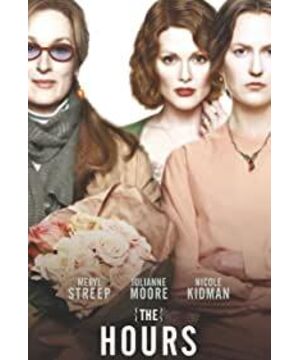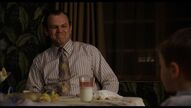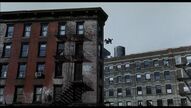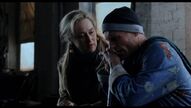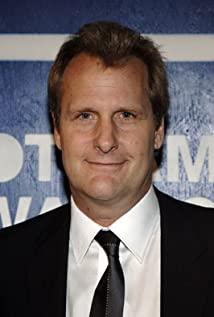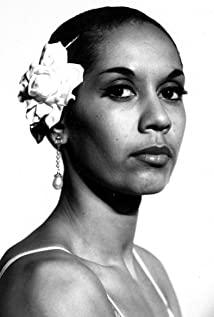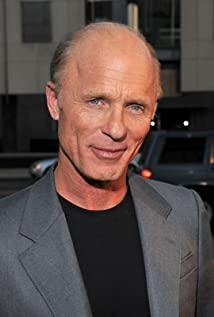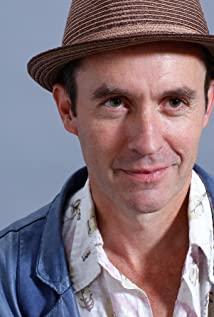As Louis Giannetti suggests, movie is a complex art compounding many language systems at the same time. Scientific research has proven that, non-verbal messages often convey more meaning than the spoken word. Before talkies were introduced to the public, silent movies had developed some techniques, montage, for instant, to present the stories and ideas to audiences. Even today, in the commercial cinema, directors are still using those nonverbal techniques to achieve a better movie.
There are many nonverbal languages, such as photography, editing, mise en scène, sound, acting (especially physical movement and facial expression), and figurative comparison. They interact dynamically and simultaneously within a single text. Some of them are overt, while the others are subliminal that audience are unconsciously impressed.
Academy Award-winning movie the Hours, considered as “a fascinating and ultimately successful stunt in its cross-cutting among the decades”, is a feminist movie directed by Stephen Daldry in 2003. In this impressive movie, Daldry successfully uses various nonverbal language systems to tell the stories of three women: Virginia Woolf, Laura Brown and Clarissa Vaughn. All three are negotiating their way through different depressive states and struggling with issues of freedom, responsibility and identity: Virginia Woolf is striving to write her novel "Mrs. Dalloway " in 1923, as she recovers from melancholia; Laura Brown is a depressed and pregnant LA housewife who reads Woolf's novel in 1951, as she plans her husband's birthday party; and, the exasperated Clarissa Vaughn is a book editor in modern-day New York ,who is planning a farewell party for her AIDS-inflicted former lover, Richard, a famous author who had nicknamed her Mrs. Dalloway because she has once played a late 20th century version of Woolf's novel.
Photography
The audience may find out that, full shots and deep focus are seldom seen in this movie. Instead, cinematographer use lots of close-up with shallow focus to present the story. It is because the Hours is a movie focusing on three women's inner worlds. Close-up tends to encourage the audience to observe the facial expression of the women and thereby to notice the conflicts in their minds. Shallow focus helps in the same way. By making the surroundings vague, it concentrates on human face.
Color and tone is another important technique of photography in this movie. For a long time, color and tone have been serving for symbolic purpose in any form of visual art. Mostly, cool colors suggest serenity, depression and apartness while warm colors suggest violence, hope and stimulation. Likewise, dark tone implies evil and fear while bright tone implies pleasure and joy. Women in the Hours are live in three different times with three different living conditions, but they are all suffering from depression. Therefore, filmmaker creates three different tones in order to make distinctions between them.
Virginia Woolf, is a woman with melancholia in 1950s. So we can see the tone in this part is mainly gloomy. Sometimes, there is warm sunshine in the shots but she barely faces it. This is actually indicating that her advanced vision of life and woman is incongruous in that society where feminist thoughts are still nascent and immature. We know that Virginia ends her own life in the end, so the gloomy tone also reflects her own personal struggle with the idea of suicide.
Different from Virginia Woolf, Laura Brown lives in a post-war world, so the filmmaker uses warm colors to create such a lively and hopeful atmosphere. However, such a high key tone and Brown's inner mind are in striking contrast. Thus, the audience can hardly find any joy but strong discomfort because of the besieging reality.
As for Clarissa Vaughn, she lives in 20th century's New York, a big multicultural city. So the neutral tone with various colors indicates such a modern developed world. It is noteworthy that, every time when Vaughn visits Richard, her ex-boyfriend who eventually commits suicide, the tones change to cool and low key, representing desperate feeling.
Mise en scène
Director of The Hours, Stephen Daldry, began his career in theater. So he has his own understanding in staging action. Although long shots are considered as a more theatrical medium for mise en scène, Daldry use more close shots than long shots to concentrate the characters' emotion. But it does not necessarily mean long shots share no importance in this movie. In fact, we can see Daldry's art of mise en scène by analyzing those scarce long shots in The Hours. This essay chooses one typical long shot to see how mise en scène, as one of the nonverbal language system, gives information to the audience.
In one scene, Mrs. Brown watched her husband drives to work in her house, forcing an unnatural smile. Her 5-year-old son Charles is gazing behind her. The mise en scène is compartmentalized into two, with the door frame serving as the vertical dividing line. Brown is on the right and in the upper portion of the frame. Charles dominates the left lower half. Charles can feel things are beginning to go wrong and Brown realizes once again she does not want life like this. Brown tunes back, facing her son. They are both silent. This is the dramatic context and the analysation of this shot is as follow:
1. Dominant. Because of the extremely high contrast between the light outside and the moving body of her, Brown tends to attract the audience's eye first. She is also the subject where the little boy in the foreground is gazing.
2. Lighting Key. The interior is photographed in moderate low key, with the exterior consisting mostly of blinding sun light which is in extreme high key.
3. Shot and camera proxemics. This is a deep-focus shot, extending from a medium rage in the foreground to a full shot range in the background. With such a shot, we can only focus on what is going on inside the house. The man outside is not our concern any more. The camera is at a personal distance from Charles, a social distance from Brown. The woman is gazing on her son silently, and the audience is watching her from the view of little Charles, having no idea of what wrong with Brown.
4. Angle. Because we can see more of the floor than the ceiling, so the camera is at a slight high angel. The angle implies a slight air of fatality.
5. Color values. Warm colors but in dark tone, suggesting unconscious despair and depression are concealed under the peaceful life.
6. Lens/filter/stock. A wide-angle lens is used to capture its depth of field. The lens emphasizes the distance between the mother and son. No apparent filter. It is difficult to discern the stock being used here.
7. Subsidiary contrasts. Our eye travels from Brown (the dominant) to little Charles. In this shot, we will probably focus more on Brown because she is turning round.
8. Density. The shot has a high degree of density, especially considering the low-key lighting. Such details as the vase, the flowers, the tables, the lamps, the sofas, the chair, the window and the expressive face of Mrs . Brown are creating kind of constriction and sense of pressure in a normal cozy house.
9. Composition. The image is divided into two areas, left and right. It is suggesting tension between the mother and son.
10. Form. Closed: with a closed door and a lot of furniture, there is no exit for Mrs. Brown to escape through. The house is a symbol of her current life.
11. Framing. The shot is tightly framed, with little latitude for movement. Both the mother and son have no way out. Especially for Mrs. Brown, she is imprisoned within the frame of the window, implying that she is stuck in her current life.
12. Depth. The shot is photographed in three depth planes: (a) Little Charles in the foreground; (b) the rest of the parlor; and (c) Mrs. Brown in front of the window.
13. Character placement . Mrs. Brown occupies the upper portion of the image, her son Charles the lower. It is a portentous placement, for the reason the mother and son are maximally separated at the opposite edges of the composition, indicating that they will be apart eventually.
14. Staging position. Charles is back to camera but close to the audience, giving a relatively intimate impression. Brown is in quarter-turn position so that we can see her and feel her pain. However, the distance between her and the audience makes Brown unpredictable.
15. Character proxemics. Charles is far from his mother, in a social distance.
Figurative comparison
There are several symbolic motifs in the movie the Hours. The two most important motifs in the movie are water and flower.
The first scene of the movie is a close up of the choppy river. Soon after this scene, Virginia Woolf writes a suicide note and steps out of her house heading to the river where she finally drowns herself. Similarly, after Laura Brown takes the pills and tries to commit suicide in the motel room, there is a surreal scene showing that she is drowning in the water. Obviously, water is serving as a motif here, reminding the audience of the similar situation that bothering both Woolf and Brown. They both want freedom but they are imprisoned by the social role of female and the ordinary family life. Therefore, water is also a generalized symbol of threat, which makes them overburdened and decides to surrender life. However, times have changed. Society gives more and more freedom to women.That's why the water in the motel room recedes when Brown wakes up. Though Brown is sick of normal life like Virginia Woolf does, she chooses to fight back and starts her own life by leaving her family.
Flowers are the subject of the famous opening line of Mrs. Dalloway and appear throughout The Hours as tools to “brighten moments of emotional intensity”. In Mrs. Dalloway, the story begins with her leaving her house to buy flowers for the party that night . Clarissa Vaughn leaves her apartment with the same intention. Flowers, particularly roses, have different implications for each of the major characters: for Virginia, the roses around the dead bird's bed indicate funereal blankness and release. For Clarissa, the flowers she buys signify joy and vitality. She brings Richard flowers to brighten his dark apartment, and she brings some home to decorate her own apartment. Mrs. Brown sees the roses that she puts on the birthday table for Dan as a way to make up for the mental distance she puts between herself and her family.
Editing
Rather than telling one story, the Hours intercut three. Connecting stories from three different women in three different times can be a huge challenge. Nevertheless, Daldry did a fantastic job by skillfully using thematic montage. Three stories are developed not separately but in parallel fashion. Scenes of one time period are intercut with scenes of another. The continuity is no longer physical, or even psychological, but conceptual.
Stories of three women are jointed at certain motifs in the movie. For example, flowers in three different time of period intercut in 10 seconds to deepen the motif. Moreover, there are scenes of their partners coming home in the morning. They then introduce different stories: Woolf's husband sees the suicide note; Mr. Brown buys flowers to her wife; Clarissa is waked up by her partner's move. In the Hours, we can see dozens of jointing point like that.
Another highlight on editing in this movie is about Charles. When the little boy is crying and chasing her mother's car, there is a close up on his face. At the same time, a photo of Mrs. Brown fades in. With the lens zooming out, the audience sees an old man's hand holding the picture. The audience knows this is the hand of Richard, Clarissa's ex-boyfriend. This montage reveals the relation between the characters and surprises the audience.
The Hours is successful in both commercial box office and critics. It receives 9 Academy Award nominations and becomes the 56th highest grossing film of 2002. A successful movie involves lots of factors. But there is no doubt that, the masterly use of nonverbal language certainly contributes much to it. The nonverbal languages such as photography, mise en scène and montage contain lots of information that the director would like to share with the audience. And in The Hours, such techniques are perfectly put together to deepen the theme and, once again, shows enchantment of movie art.
View more about The Hours reviews


